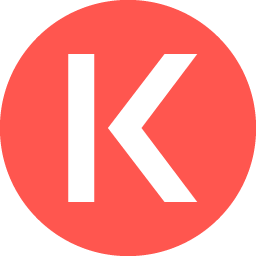







































BlockDAG’s Keynote 3 Exposes the Flaws in Bitcoin and Ethereum—And How Its $208M Presale Wins Big
 BTC
BTC
 ETH
ETH
 BNB
BNB
 AVAX
AVAX
 SEI
SEI
When it comes to blockchain scalability and miner sustainability, not all projects are created equal. Bitcoin’s abrupt halving model often leads to miner turnover and network instability, while Ethereum’s gas fees and limited scalability remain ongoing challenges.
In contrast, BlockDAG’s continuous halving model offers a balanced approach, gradually reducing rewards to maintain miner profitability without sudden drops. This geometric reduction not only keeps miners engaged but also ensures long-term network health. As a result, BlockDAG has positioned itself as a practical solution to the problems faced by both Bitcoin and Ethereum, making it a promising model for future blockchain networks.
Bitcoin: Pioneering the Cryptocurrency Revolution
Launched in 2009 by the mysterious Satoshi Nakamoto, Bitcoin became the first decentralized digital currency, marking the beginning of a new financial era. Initially valued at virtually zero, the first significant transaction occurred in 2010 when 10,000 BTC were exchanged for two pizzas. As time went on, Bitcoin’s journey from obscurity to mainstream adoption was marked by extreme volatility and exponential growth.
In November 2013, it reached $1,000 per BTC for the first time, and by December 2017, the price soared to nearly $20,000. Despite major fluctuations, Bitcoin remained resilient, breaking its previous all-time high in 2021, reaching over $60,000. As of March 26, 2025, Bitcoin’s value stands at approximately $87,847.17, representing a monumental increase of over 2,928,000% from its early days.
Consequently, early adopters and investors who held their positions have realized immense profits, as Bitcoin continues to dominate the cryptocurrency market, serving as both a digital store of value and a hedge against inflation.
Ethereum: Transforming Blockchain with Smart Contracts
Ethereum, envisioned by Vitalik Buterin in 2013 and launched on July 30, 2015, revolutionized blockchain technology by enabling smart contracts and decentralized applications (dApps). In contrast to Bitcoin, which functions as digital gold, Ethereum introduced a programmable blockchain platform, allowing developers to build decentralized solutions.
During its initial coin offering (ICO) in 2014, Ether (ETH) was sold at just $0.31 per token, raising over $16 million. Consequently, the project’s innovation quickly attracted a vibrant developer community, leading to the creation of numerous decentralized finance (DeFi) projects and NFTs. As a result, Ethereum’s value skyrocketed from under $10 in 2016 to over $1,000 by January 2018.
As of March 26, 2025, Ethereum’s price has surged to approximately $2,068.60, marking a staggering increase of over 667,000% since its ICO. Thus, early investors who supported the project have seen phenomenal returns, while Ethereum remains integral to blockchain innovations and the thriving DeFi ecosystem.
BlockDAG’s Continuous Halving Model Could Be the Answer to Bitcoin’s Miner Crisis
Bitcoin’s halving model has been a double-edged sword since its inception. Specifically, every four years, miner rewards are slashed by 50%, creating sudden revenue drops that strain profitability. Consequently, this abrupt halving model often forces less efficient miners out of the network, risking centralization and compromising security.
BlockDAG, on the other hand, approaches the challenge differently. Its continuous halving model gradually reduces rewards through a geometric curve rather than an abrupt cut. As a result, this smooth transition allows miners to adapt incrementally, maintaining profitability without sudden shocks. Therefore, BlockDAG preserves network health by keeping more participants engaged.
The model’s practical success is evident in BlockDAG’s remarkable growth. During its presale, the project raised $208 million, currently at batch 27 with a price of $0.0248 per token. Since batch 1, the Return on Investment (ROI) has surged to an impressive 2,380%. In addition, over 18.9 billion coins have already been sold, reflecting strong community and investor confidence.
Unlike Bitcoin’s model, which periodically disrupts mining operations, BlockDAG’s continuous reward reduction keeps miners consistently incentivized, promoting long-term network stability. This approach to halving is crucial for sustaining miner engagement, ensuring decentralization, and reducing security vulnerabilities.
With Bitcoin facing increased miner turnover after each halving, BlockDAG’s sustainable model presents a practical solution, addressing key issues that have long plagued the blockchain space. As adoption continues, BlockDAG’s model may very well redefine how crypto networks manage miner incentives and network security.
Rethinking Blockchain Sustainability with BlockDAG
As blockchain technology continues to mature, the shortcomings of traditional models like Bitcoin’s abrupt halving and Ethereum’s scalability issues become increasingly evident. While Bitcoin’s model risks miner attrition and Ethereum struggles with network congestion, BlockDAG’s continuous halving model stands out as a thoughtful approach to sustaining miner engagement and network health.
By gradually reducing rewards rather than imposing sudden cuts, BlockDAG promotes stability and longevity. Its commitment to scalability and security further underscores its potential as a viable blockchain solution. As more users and developers look for practical alternatives, BlockDAG’s balanced model may set a new standard for blockchain sustainability.
Website: https://blockdag.network
Presale: https://purchase.blockdag.network
Telegram: https://t.me/blockDAGnetworkOfficial
Discord: https://discord.gg/Q7BxghMVyu
Disclaimer: Any information written in this press release does not constitute investment advice. Optimisus does not, and will not endorse any information about any company or individual on this page. Readers are encouraged to do their own research and base any actions on their own findings, not on any content written in this press release. Optimisus is and will not be responsible for any damage or loss caused directly or indirectly by the use of any content, product, or service mentioned in this press release.

